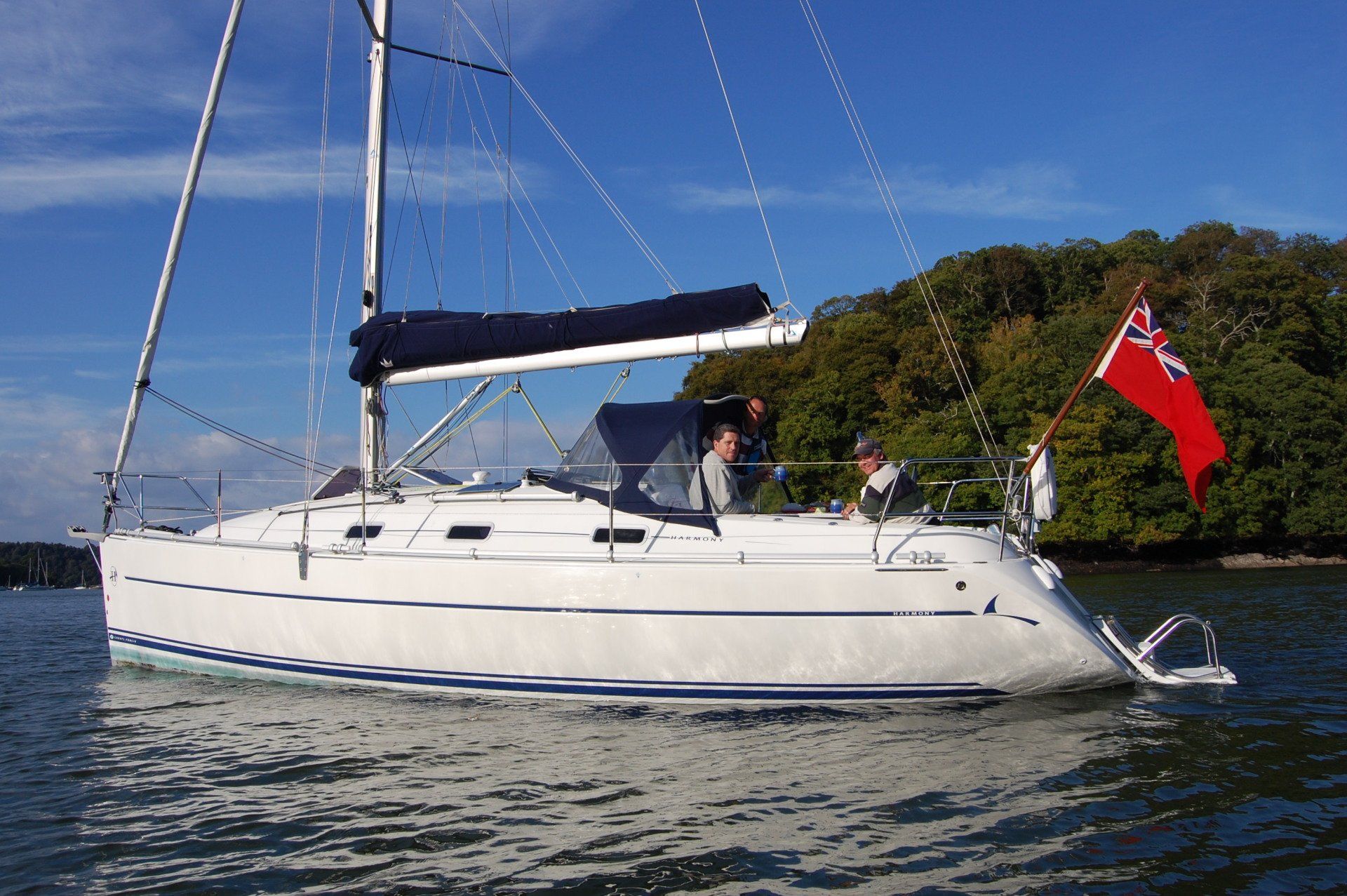
We have the following items of safety gear aboard our 34’ yacht:
- Harness clip-on eye in cockpit;
- Jackstays of nylon webbing on deck;
- Lifejacket for each person of the automatic type with automatic lights and harness eyes;
- Grab bag with small pack of flares, water bottles, torches, whistle;
- Radar reflector of the IMO type secured to the mast;
- Searchlight. Can be hand held but must be powerful to look for MOB. The searchlight can also be shone on the big white mainsail to make the yacht more visible if a ship looks close;
- Towline 30m long. 1mm diameter stretchy nylon;
- Main anchor 16kg of the ‘Delta’ type;
- 8mm or 10mm anchor chain at least 50m in length;
- Kedge anchor of 10kg;
- Flameproof hose used for the engine coolant seawater intake hose as the sea water intake seacock is inside the engine compartment;
- EPIRB of the 406 MHz type;
- Wire cutters/bolt croppers;
- Thermal Protective Aids (TPA) – one for each person;
- Liferaft of the SOLAS B type (see note below);
- Radar (optional);
- Danbuoy;
- Lifebuoys with floating lights x 2;
- MOB rescue sling with floating line;
- Boarding ladder fitted to stern;
- Torches – at least one per person and lots of spare batteries;
- Gerber floating knife;
- Gerber multi tool (always in my pocket);
- Pack of distress flares of the offshore type;
- First aid kit;
- First aid manual;
- Emergency tiller if you have wheel steering;
- Binoculars;
- Drogue;
- Tool kit;
- Foghorn;
- Emergency portable navigation lights;
- Smoke detectors – one for each cabin;
- Gas detector;
- NAVTEX weather forecast receiver;
- Laptop with 3 dongle for weather forecasts;
- Fixed VHF radio of the DSC type which is linked to a GPS;
- Emergency VHF aerial;
- Handheld VHF radio in working order;
- Lanyard to secure the main hatch washboards shut whilst at sea;
- Fire extinguishers – one for each cabin and cockpit;
- Fire hole and bung set into companionway steps above engine;
- Fire blanket;
- All opening hatches, skylights and portlights are fitted with signs that state ‘Do not open at sea’;
- A sign stating ‘Exit’ near to the companionway in the saloon ( a bit obvious I know);
- Bosun’s chair;
- Owner’s manual that came with the boat;
- Maintenance manual that I wrote (mostly ignored);
- Training manual to show crew where all the bits are;
- SOLAS life saving signal table;
- Tool kit;
- Clock;
- Barometer;
- Boat hook;
- Buckets with lanyards x 2 (strong good buckets);
- Motor sailing cone signal shape;
- Anchoring sphere signal shape;
- Inflatable tender.
Liferaft: We have an older RORC four-man valise liferaft that has its own built-in SOLAS B safety kit bag inside. This liferaft is horrendously expensive to have serviced.
In the December 2011 issue of Sailing Today you will find an excellent review of the cheaper ISO 9650 standard liferafts. These liferafts are better than the cheapies that you find in chandlery shops for around £550.00 but it has to be ISO 9650 Group A for charter use.
Ocean Safety www.oceansafety.com , Zodiac and Viking make good liferafts to the ISO 9650 Group A standard.
If you intend to charter out the yacht or use it for teaching, you will need a liferaft built to the SOLAS standard and it must be marked with the ships wheel logo (or it can be to the ISAF OSR standard).
ISAF stands for International Sailing Federation and the raft must comply with the Offshore Special Regulation Appendix A part 2 (OSR).
Or it can be ISO 9650 Group A as mentioned above.
Liferafts should ideally be of the canister type and be able to float free and self inflate by the use of hydrostatic release units. However, valise type, manually operated liferafts are fine.